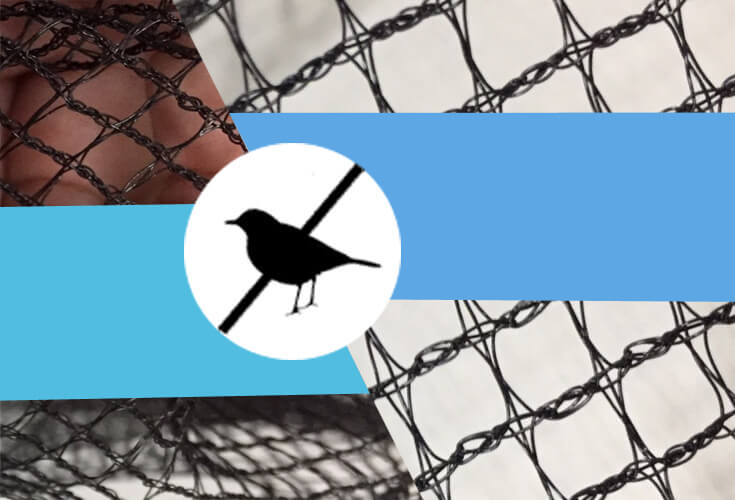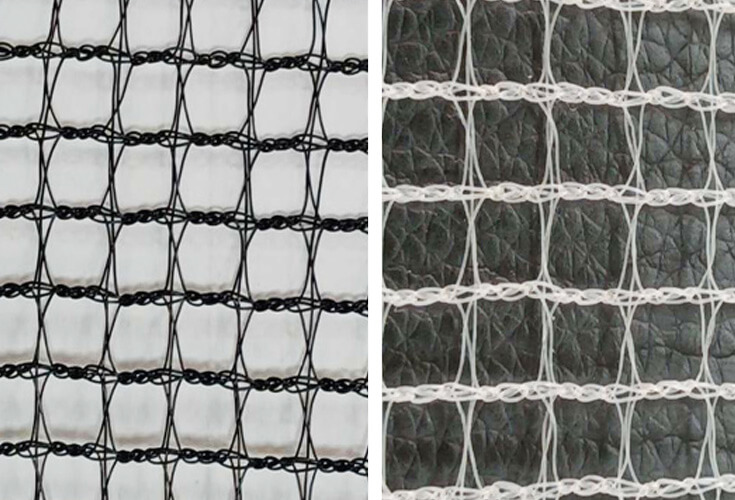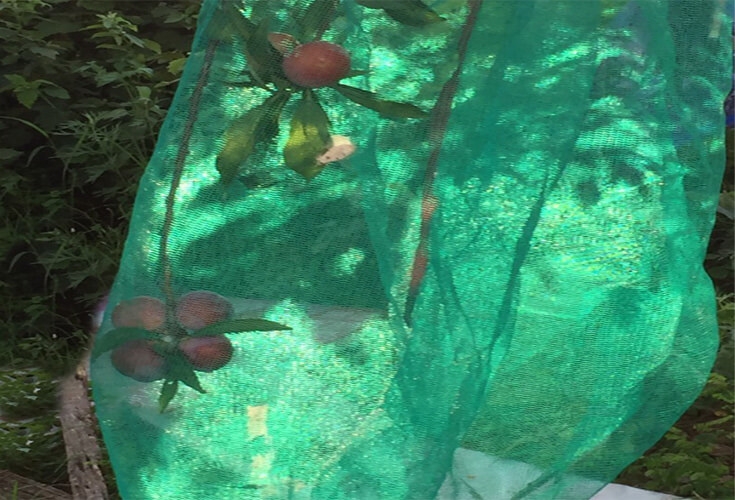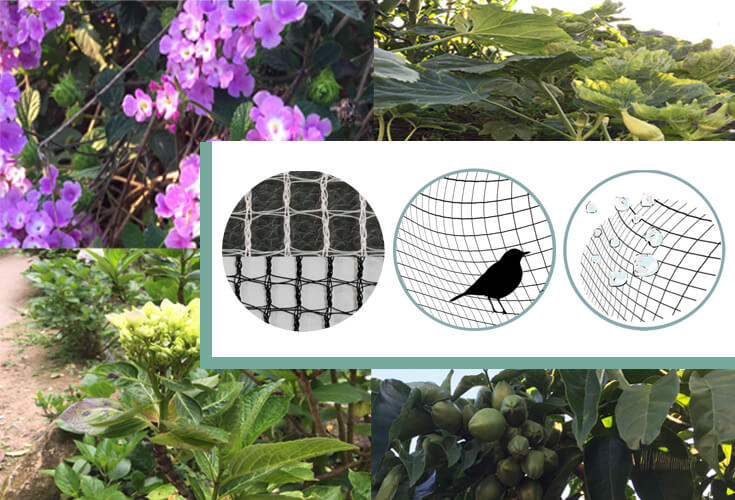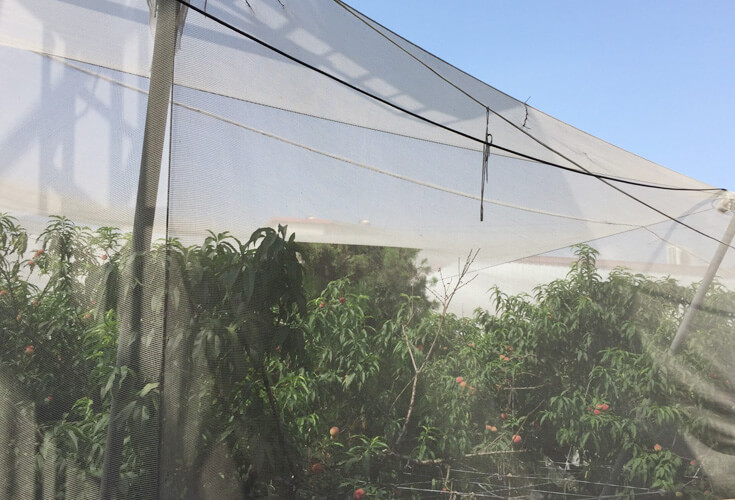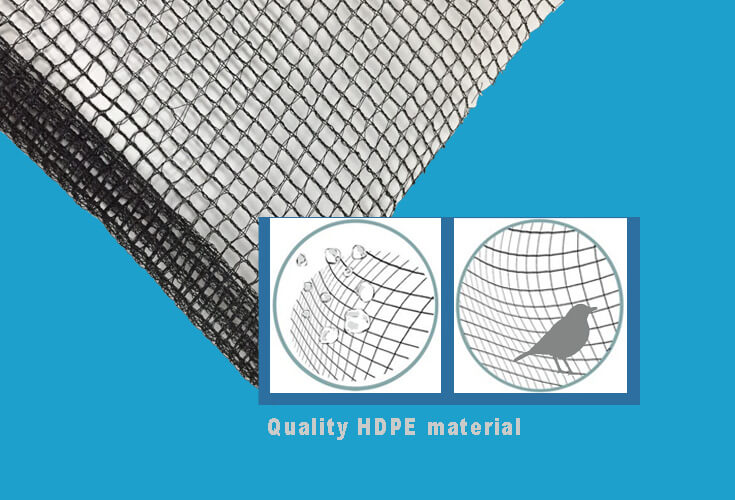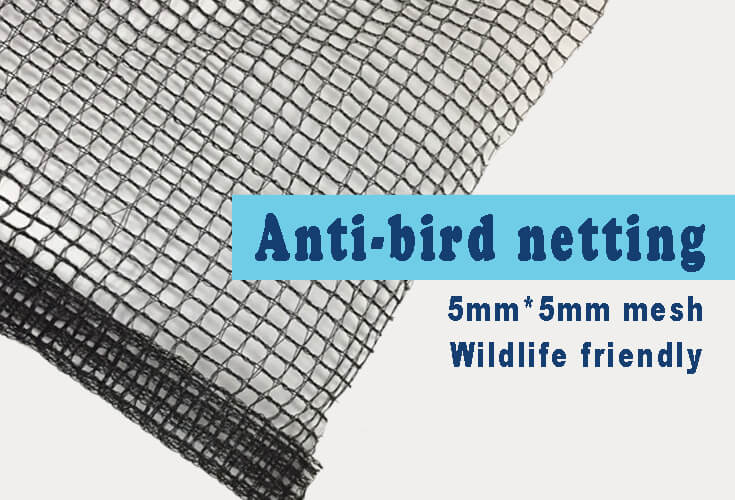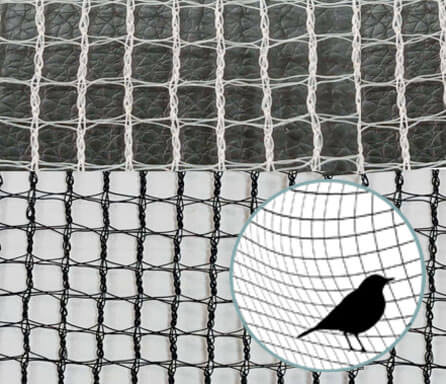Anti Bird Barrier Netting
Why Use Bird Netting?
Anti-bird barrier netting is designed for the purpose is to protect valuable assets, crops, and property from damage caused by birds, such as pecking, feeding, droppings, and nesting. The Bird barrier nets are designed to be bird-friendly, ensuring that the birds are not harmed when they come into contact with the netting. In one word, bird barrier nets offer an environmentally friendly and humane method to manage bird-related issues, providing a practical solution for protecting assets and crops without causing harm to birds.
The anti-bird barrier net provided by Successful Mat is made of tear-resistant and durable HDPE, which has the advantages of UV resistance and corrosion resistance. HDPE is an environmentally friendly material that does not release harmful chemicals into the soil and is harmful to the environment. friendly. Our bird barrier mesh can be cut to any size you need based on customer requirements, for example: 5mm x 5mm mesh size prevents birds and other small pests from entering, but animals are not trapped.
Applications of Anti-Bird Netting
- Agriculture: Anti-bird nets can be used in orchards, vineyards, farmland and other places to prevent birds from pecking crops.
- Gardening: In the garden or courtyard, it can be used to protect flowers and vegetables from birds.
- Construction: On construction sites, it can be used to cover open areas to prevent birds from entering or gathering.
What Colors are Available for Bird Netting?
Bird netting is available in a variety of colors, the most common of which are black, white, and clear. Black anti-bird netting is highly concealed and relatively undetectable by birds, reducing the possibility of birds entering. Black can usually absorb sunlight better, has stronger sun resistance, and has a longer service life. However, the disadvantage is that black can Absorb light and raise the temperature of the covered area, possibly causing heat damage to some plants. White or transparent anti-bird netting can reduce the temperature of the covered area and is more friendly to plants. However, the disadvantage is that dust or dirt is obvious and requires regular cleaning and maintenance.
Anti-Bird Barrier Netting Size
- Fine mesh anti-bird netting: usually has smaller mesh holes, which can effectively prevent small birds from entering, such as sparrows, swallows and other small birds.
- Medium mesh anti-bird net: suitable for blocking medium-sized birds, such as pigeons, crows, small seabirds, etc.
- Large mesh anti-bird net: The mesh is larger, which can prevent large birds from entering, such as geese, ducks, large seabirds, etc.
How to Install Bird Netting?
- Measure and plan: First measure the size of the area you need to cover and determine the required size of bird netting.
- Prepare support structures: Build support structures around or above the area to be covered, such as brackets, support poles or grids.
- Secure the bird netting: Unfold the bird netting and gently cover the supporting structure. Make sure the mesh is intact and flat, and use straps, ropes, or other fixing materials to secure the edges of the bird netting to the supporting structure to ensure the mesh cannot be blown by wind or penetrated by birds.
- Inspection and adjustment: Check the anti-bird netting after installation to ensure that the coverage is complete and there are no loopholes or loose spots. Make adjustments and corrections if necessary.
During the installation process, handle the anti-bird netting carefully to avoid damaging the mesh, and make sure there are no sharp objects around the anti-bird netting to prevent the mesh from being scratched. In addition, the anti-bird netting needs to be checked regularly, especially in strong winds or climates.
Anti-bird barrier netting Specification
- Width: 6 / 6.6 / 8 / 10 / 12 / 13.2 ft (1.8 / 2 / 2.4 / 3 / 3.6 / 4m)
- Length: 330ft ( 99~100m), customized length is available
- Color: Black, Translucent White
- Weave: 4 needles
- Weight: 53g/sqm
- Type: Square knitted
- Thread: Monofilament threads
- Allowing air, water and light to get to the fruit trees.


